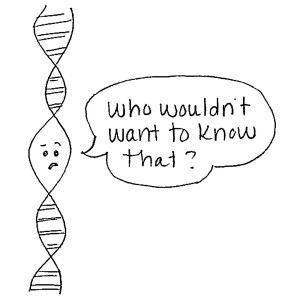That Which Life is Made Of, Dude
Living things are made of cells.
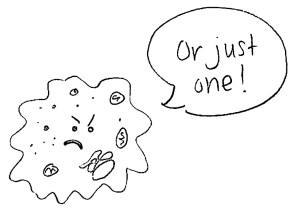
Yes, right. It can be just one cell also. But we agree that the cell is the building block of life. But then, what are the building blocks of these building blocks? What is life actually made of?
I will tell you!

At the most basic level, we are made of atoms, just like all matter is. Living things are mainly composed of the following ingredients:
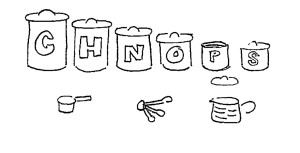
But we don’t have these in our bodies as pure elements. You don’t have bits of graphite floating in your blood stream or anything. We have these elements arranged in various combinations, making large molecules.

There are 4 main types of these molecules, and they might sound very familiar to you: proteins, carbohydrates, lipids, and nucleic acids.
Proteins are responsible for a lot of the structure in a cell and your body. When you look at yourself in the mirror, most of what you notice about yourself is protein. Your hair, your skin, your eye color. These are the workings of protein. As I’ve mentioned before, DNA (in all its wisdom) has instructions for making protein, which is what makes you who you are.
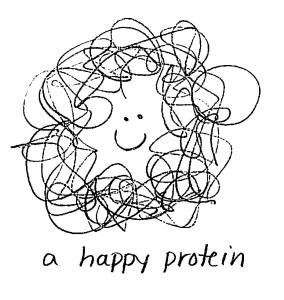
Proteins are used as a means of communication in the body. Cells have proteins on them that identify them as kidney cell or an immune cell or whatever else. Allergies are the body’s response to an unknown protein. The body is pretty obsessive about “knowing everyone,” so in this way, it’s very Hollywood.
The process of forming a thought or having an emotion is run by proteins. Neurons release proteins that trigger other neurons, and so on like dominoes it goes until you have flashes in your brain that you interpret as, “I’m sad that I dropped my Oreo on the floor.”

Carbohydrates are sugars, but this varies from simple sugars like regular table sugar

to big guys like cellulose, starch, and glycogen. Carbohydrates are mostly used to store energy–which means they have a lot of calories, which in turn is why Dr. Atkins told a lot of people not to eat them.
Sugars can be drawn as a hexagon because they actually are this shape. It’s also a lot easier:

Cellulose is made of long chains of sugars, and plants use it in their cell walls for structure. We humans can’t digest cellulose. We can’t break any bonds and get any energy from it. This is why celery has almost no calories. But having cellulose run through our digestive system is good for cleaning the intestines and moving things along, as they say. You may be more familiar with the common name of cellulose: fiber.
Starch and glycogen are forms of sugar for long term energy storage. Starch is the plant variety (hellooooo potatoes), and glycogen is the animal equivalent.
Lipids are fats. Lovely, lovely, lovely fats. The basic fat, called a triglyceride, looks like a sideways jellyfish.

The legs of the jelly are fatty acids–long chains of carbon and hydrogen. Because the chains are so long and there are so many bonds, lipids store a LOT of energy, which is why people try not to have too much of them in their diet. But oh, they taste so good. The long chains slipping and sliding past each other is responsible for the oily nature of fats. I’m getting hungry.
Lipids are very important to every single cell, because they make a fabulous cell membrane. To be exact, membranes are made of phospholipids, which are phosphate “heads” with 2 fatty acid tails. It’s actually kind of a cute little guy.

These all line up and form a double-layered circle, and that, my friend, is a membrane.
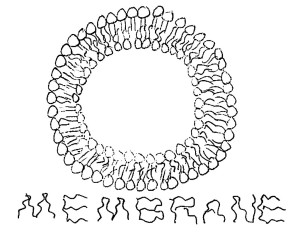
Nucleic acids are the information storage molecule. You have your long term storage in your DNA (deoxyribonucleic acid), and your short term storage in your RNA (ribonucleic acid).
Want to know the difference between them? They both have “ribo” in their name because of a sugar called ribose. RNA has plain ol’ ribose, and DNA has a form of ribose minus one oxygen atom, so it’s called de-oxy to show very clearly that it has one less oxygen. You probably didn’t want to know that, but oh well, it’s too late now.
